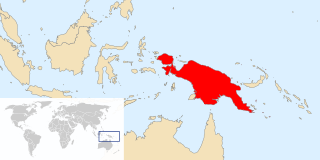Parabitecta is a genus of moths in the subfamily Arctiinae. It contains the single species Parabitecta flava, which is found in China.
Saenura is a genus of moth in the subfamily Arctiinae. It contains only one species, Saenura flava, which can be found in South Africa, Angola, Lesotho, Malawi, Namibia, Zambia and Zimbabwe.
Elachyophtalma is a genus of moths of the family Bombycidae. The genus was erected by Cajetan Felder in 1861.
Clemensia flava is a moth of the family Erebidae. It is found in Brazil.
Spilosoma ningyuenfui is a moth in the family Erebidae. It was described by Franz Daniel in 1943. It is found in China.
Elachyophtalma bicolor is a moth in the Bombycidae family. It was described by George Thomas Bethune-Baker in 1904. It is found in New Guinea.
Elachyophtalma inturbida is a moth in the family Bombycidae. It was described by Francis Walker in 1865. It is found on Sulawesi.
Elachyophtalma kebeae is a moth in the family Bombycidae. It was described by George Thomas Bethune-Baker in 1904. It is found on New Guinea.
Elachyophtalma cotanoides is a moth in the family Bombycidae. It was described by Lord Rothschild in 1920. It is found on New Guinea.
Elachyophtalma dohertyi is a moth in the family Bombycidae. It was described by Lord Rothschild in 1920. It is found on the Tanimbar Islands in Indonesia.
Elachyophtalma doreyana is a moth in the family Bombycidae. It was described by Lord Rothschild in 1920. It is found on New Guinea.
Elachyophtalma fergussonis is a moth in the family Bombycidae. It was described by Lord Rothschild in 1920. It is found on Fergusson Island.
Elachyophtalma flavolivacea is a moth in the family Bombycidae. It was described by Lord Rothschild in 1920. It is found on New Guinea.
Elachyophtalma quadrimaculata is a moth in the Bombycidae family. It was described by van Eecke in 1924. It is found in New Guinea.
Elachyophtalma picaria is a moth in the family Bombycidae. It was described by Francis Walker in 1865. It is found in New Guinea.
Inga flava is a moth in the Oecophoridae family. It was described by Zeller in 1839. It is found in Colombia, Peru and Brazil.
Calapterote is a monotypic moth genus in the family Eupterotidae. Its only species, Calapterote butleri, is found on Buru in Indonesia. Both the genus and species were described by Holland in 1900.
Pseudanarta flava is a species of cutworm or dart moth in the family Noctuidae. It is found in North America.
Euclea flava is a species of slug caterpillar moth in the family Limacodidae.


